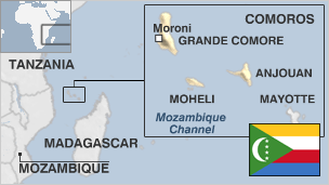
Facts and stats about Comoros
Comoros Islands is situated at the northern point of Mozambique Channel. These four islands used to play a principal role in global economy since Comoros provided a key stopover for traders plying the eastern route going to Africa and the western hemisphere. Comoros Islands were ruled by the French until 1975 when the three islands declared their independence from France. Only Mayotte continued to be administered by the European nation.
The economy of Comoros grew by approximately 2.7 percent in 2012 notwithstanding the crisis in the European Union. This growth was propelled by robust agricultural exports, foreign direct investment in the transport sector (roads and sea ports) along with domestic demand supported by remittances from immigrants. There is projected resurgence of public investment in economic and social infrastructure (energy, water, transportation, health and education) after Comoros managed to get out of the category of Heavily Indebted Poor Countries. Likewise, private investment is expected to increase by 9 percent until the end of 2014.
Comoros is a member of the Organization of Islamic Cooperation, Arab League and Indian Ocean Commission. Since it claimed independence in 1975, the Comoros Islands experiences numerous coup attempts. Despite the economic breakthrough, approximately half of the country’s population still lives under the daily international poverty level of $1. 25.
The United Nations Regional Center for Peace and Disarmament in Africa (UNREC) dispatched a mission to Comoros after the new government of Ikililou Dhoinine was installed in May of 2011. UNREC’s objective was to draft guidelines for the amplification of a national security policy for the country. The armed forces are composed of a small standing army, 500-man police force and 500 members of the defense force.

1,860 sq km
Sq. km. Ranked 166th in 2008.